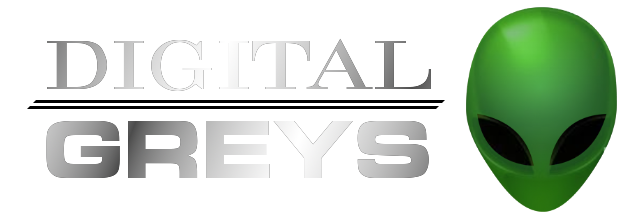Optimize Website Graphics to Boost Page Load Speed
In today’s fast-paced digital world, where attention spans are short and competition is fierce, the speed at which a website loads can make or break its success. Users expect instant access to information and seamless browsing experiences, and slow-loading websites can frustrate and drive them away. Moreover, search engines like Google consider page load speed as a crucial ranking factor, impacting a website’s visibility and organic traffic. One significant aspect that affects load times is the optimization of website graphics.
Website graphics, including images, icons, and illustrations, play a vital role in creating visually appealing and engaging online experiences. However, if not optimized properly, they can significantly contribute to slower load times. Large file sizes, uncompressed images, and inefficient formats can all add unnecessary weight to a web page, leading to frustrating delays in loading.
The purpose of this article is to delve into the realm of website graphic optimization and provide you with effective strategies to boost page load speed. We will explore various techniques and best practices that can help you strike the perfect balance between visual aesthetics and optimal performance. By implementing these strategies, you can create websites that load swiftly, captivate users, and improve your search engine rankings.
Before we delve into the strategies themselves, let’s take a closer look at the impact of website graphics on load speed. Understanding this connection will provide valuable insights into why optimization is crucial and how it can make a tangible difference in your website’s performance. So, let’s dive in and unlock the secrets to optimizing website graphics for lightning-fast load times!
UNDERSTANDING THE IMPACT OF WEBSITE GRAPHICS ON LOAD SPEED
In order to effectively optimize website graphics and boost page load speed, it’s essential to understand the role they play in the overall performance of a website. Website graphics encompass images, icons, illustrations, and other visual elements that contribute to the visual appeal and user experience. However, these graphic elements can also be a significant factor in slowing down a website if not optimized correctly.
A. Definition of Website Graphics and Their Importance Website graphics refer to visual elements used on a website to convey information, enhance aesthetics, and engage users. They can include product images, banners, logos, infographics, background images, and much more. These visuals play a crucial role in capturing visitors’ attention, conveying brand messages, and guiding users through the website’s content. Nevertheless, they can have both positive and negative implications on load times.
B. How Website Graphics Impact Load Times Website graphics directly impact the file size of a webpage. Larger file sizes result in longer loading times, increased bandwidth consumption, and potential performance issues, particularly for users on slower internet connections or mobile devices. When a webpage contains numerous unoptimized images or graphics, it requires more time for the browser to download and render them, leading to slower overall load speed.
C. Common Graphic-Related Performance Issues Several factors contribute to graphic-related performance issues on websites. These issues can include:
- Large File Sizes: Graphics with high resolutions, uncompressed formats, or unnecessary metadata can significantly increase file sizes. This, in turn, slows down the loading process.
- Inefficient Image Formats: Choosing the wrong image format can result in larger file sizes than necessary. For example, using a JPEG format for images with few colors or gradients instead of the more appropriate PNG format can lead to compromised image quality and suboptimal file sizes.
- Unoptimized Icons and Illustrations: Icons and illustrations can add visual appeal to a website, but if they are not optimized, they can become a performance bottleneck. Poorly optimized SVG icons or complex vector illustrations can increase file sizes and impact load times.
- Excessive HTTP Requests: Each graphic element on a webpage requires a separate HTTP request to fetch it from the server. Having an excessive number of images or graphics can result in a high number of requests, which slows down the page loading process.
By understanding these issues and their impact on load times, we can now explore the best practices and effective strategies for optimizing website graphics. Implementing these techniques will help ensure that your website loads quickly and delivers an exceptional user experience.
BEST PRACTICES FOR OPTIMIZING WEBSITE GRAPHICS
To ensure optimal performance and faster load times, implementing effective strategies for optimizing website graphics is crucial. By following these best practices, you can strike the right balance between visual quality and file size, resulting in an improved user experience. Let’s explore some key techniques for optimizing website graphics:
A. Image Compression Techniques
One of the fundamental steps in optimizing website graphics is utilizing image compression techniques. Image compression reduces the file size without significantly compromising image quality. There are two main types of image compression: lossless and lossy. Lossless compression techniques, such as gzip compression, remove unnecessary metadata and redundant data from image files. On the other hand, lossy compression selectively discards certain image data to achieve higher compression ratios.
By using compression tools and plugins, you can streamline the process of compressing images. These tools optimize the images automatically, removing unnecessary data and reducing file sizes. It’s important to find the right balance between compression and image quality, as excessive compression can lead to noticeable artifacts or degradation in visual quality.
B. Choosing the Right Image Format
Selecting the appropriate image format is crucial for optimizing website graphics. Different image formats serve different purposes, and choosing the right format can significantly impact file size and load times. Here are some common image formats to consider:
- JPEG (Joint Photographic Experts Group): JPEG is suitable for photographs or images with complex color gradients. It uses lossy compression to reduce file size while maintaining a relatively high level of image quality.
- PNG (Portable Network Graphics): PNG is ideal for images with transparent backgrounds or graphics with few colors and sharp edges. It uses lossless compression and supports lossless transparency, resulting in larger file sizes compared to JPEG.
- SVG (Scalable Vector Graphics): SVG is a vector-based format ideal for icons, logos, and illustrations. It offers small file sizes, scalability, and sharpness across different screen resolutions.
By understanding the strengths and weaknesses of each format, you can choose the most appropriate format for your specific graphics, optimizing both file size and visual quality.
C. Implementing Responsive Images
With the prevalence of different devices and screen sizes, implementing responsive images is crucial for optimizing website graphics. Responsive images ensure that the appropriate image size is delivered to each user, based on their device and viewport. By using the srcset and sizes attributes in HTML, you can specify multiple image sources with different resolutions or sizes. This allows the browser to select and load the most suitable image for each user, reducing unnecessary data transfer and optimizing load times.
Another technique to consider is lazy loading, where images are loaded only when they are about to enter the user’s viewport. This approach improves initial page rendering by prioritizing the loading of visible content, while images below the fold are loaded as the user scrolls.
By implementing responsive images and lazy loading techniques, you can significantly enhance the performance of your website and deliver optimized graphics to users across various devices.
These are just a few of the best practices for optimizing website graphics. By incorporating these strategies into your web development workflow, you can ensure faster load times, reduced bandwidth consumption, and an overall improved user experience. In the next section, we will explore additional techniques and considerations for faster load speed, including CSS sprites, content delivery networks (CDNs), and minifying CSS and JavaScript.
D. Utilizing Image Optimization Tools
In the quest for optimal website performance, image optimization tools play a significant role in streamlining the process of optimizing website graphics. These tools provide automated solutions for compressing, resizing, and optimizing images, simplifying the optimization workflow and saving valuable time.
There is a wide range of image optimization tools available, both as standalone applications and plugins for popular content management systems (CMS) or web development frameworks. These tools offer various features and functionalities to ensure efficient image optimization. Let’s explore some key aspects of utilizing image optimization tools:
- Batch Processing: Image optimization tools often support batch processing, allowing you to optimize multiple images simultaneously. This feature is particularly helpful when dealing with large image libraries or when optimizing images for an entire website.
- Compression Algorithms: Image optimization tools utilize advanced compression algorithms to reduce file sizes without significant loss in image quality. These algorithms automatically analyze and apply the appropriate level of compression to each image, striking the right balance between size and visual fidelity.
- Format Conversion: Some image optimization tools provide the capability to convert images between different formats. This feature enables you to choose the most suitable format for each image, optimizing file sizes and ensuring compatibility with various devices and browsers.
- Optimization Presets: Many tools offer optimization presets or profiles that are specifically tailored for different use cases, such as web, mobile, or social media. These presets come with predefined settings optimized for specific platforms, ensuring that your images are optimized according to the intended usage.
- Integration with Workflow: Image optimization tools can seamlessly integrate with your existing workflow, whether you’re using a CMS, a website builder, or a local development environment. They often provide plugins or APIs that enable direct optimization of images within your preferred environment, making the optimization process more efficient and integrated.
When selecting an image optimization tool, consider factors such as ease of use, compatibility with your workflow, available features, and the level of control you require over the optimization process. By incorporating these tools into your website development workflow, you can simplify the optimization of website graphics and achieve faster load times, ultimately enhancing the user experience.
In the next section, we will explore additional techniques for optimizing website graphics, including CSS sprites and icon fonts, content delivery networks (CDNs), and the importance of minifying CSS and JavaScript.
ADDITIONAL TECHNIQUES FOR FASTER LOAD SPEED
In addition to optimizing website graphics through compression, format selection, and responsive image implementation, there are other techniques you can employ to further enhance load speed and overall website performance. Let’s explore these additional strategies:
A. CSS Sprites and Icon Fonts
CSS sprites and icon fonts are techniques used to reduce the number of HTTP requests and improve load times.
- CSS Sprites: CSS sprites involve combining multiple small images into a single larger image, known as a sprite sheet. By using CSS background positioning, you can display specific sections of the sprite sheet for different elements on your website. This technique reduces the number of image requests and helps improve load speed by loading one larger image instead of multiple smaller ones.
- Icon Fonts: Icon fonts are a popular alternative to using individual image files for icons. Icon fonts utilize scalable vector icons that can be easily styled and manipulated using CSS. By using a single font file containing all the icons needed, you eliminate the need for separate image requests, resulting in faster load times.
B. Content Delivery Networks (CDNs)
Implementing a Content Delivery Network (CDN) can significantly enhance the delivery speed of your website’s graphics. CDNs are a network of servers located in various geographical regions, allowing for the distribution of website content closer to the end users. When a user requests a webpage, the content is served from the nearest CDN server, reducing latency and improving load times.
CDNs store cached versions of your website’s static content, including images, CSS files, and JavaScript files. By offloading the delivery of these files to the CDN, you can take advantage of their optimized infrastructure, global presence, and efficient content delivery mechanisms.
C. Minifying CSS and JavaScript
Minification involves removing unnecessary characters, white spaces, and comments from CSS and JavaScript files, reducing their file sizes. Smaller file sizes result in faster downloads and improved load times.
There are various minification tools and plugins available that can automatically process your CSS and JavaScript files, removing unnecessary elements without affecting their functionality. By minifying your CSS and JavaScript, you can optimize load speed and ensure efficient code delivery to users.
It’s important to note that while minification reduces file sizes, it can make code less readable and harder to maintain. Therefore, it’s recommended to keep a separate, unminified version of your code for development purposes.
By implementing CSS sprites, utilizing icon fonts, leveraging CDNs, and minifying CSS and JavaScript files, you can further optimize your website’s graphics and enhance overall load speed. These techniques work in conjunction with image optimization strategies to create a faster and more efficient user experience.
In the next section, we will explore the importance of testing and monitoring performance improvements to ensure the effectiveness of your optimization efforts.
ADDITIONAL TECHNIQUES FOR FASTER LOAD SPEED
After implementing various strategies to optimize website graphics and improve load speed, it is essential to test and monitor the performance of your website. Testing allows you to measure the impact of optimization techniques and ensure that they are effectively enhancing load times. Monitoring, on the other hand, helps you keep track of ongoing performance and identify any potential issues that may arise. Let’s explore the importance of testing and monitoring performance improvements:
A. Conducting Performance Tests
Performing performance tests enables you to evaluate the effectiveness of your optimization efforts. By measuring load times, page size, and other performance metrics, you can gain valuable insights into the impact of different optimization techniques on your website. There are several tools available that can help you conduct performance tests, such as Google PageSpeed Insights, GTmetrix, and WebPageTest.
During performance tests, compare the results before and after implementing optimization strategies to determine the improvements achieved. Pay attention to factors like overall load time, time to first byte (TTFB), and the number of HTTP requests. These metrics will provide valuable data on the success of your optimization techniques and help you identify any areas that require further improvement.
B. Tools and Services for Monitoring Performance
Once you have optimized your website graphics and achieved improved load times, it is crucial to monitor ongoing performance to ensure that it remains consistent. Performance monitoring tools and services allow you to track and analyze key performance indicators (KPIs) to identify potential issues and maintain optimal load speed.
Consider utilizing tools like Google Analytics or website monitoring services that offer performance monitoring features. These tools provide insights into metrics such as page load time, bounce rates, and user engagement. By monitoring these metrics, you can detect any performance degradation or anomalies and take proactive measures to address them promptly.
Additionally, consider setting up alerts or notifications to receive real-time updates when performance issues arise. This allows you to quickly identify and resolve any issues that may impact the user experience.
C. Analyzing the Impact of Optimization Strategies
Regularly analyze and evaluate the impact of your optimization strategies to ensure they continue to provide positive results. This analysis involves comparing performance metrics over time and identifying trends or patterns that may require further attention or optimization.
Keep in mind that web technologies and user behaviors evolve, so periodically revisit and reassess your optimization techniques to adapt to any emerging trends or changes in best practices.
By conducting performance tests, monitoring ongoing performance, and analyzing the impact of optimization strategies, you can ensure that your website maintains optimal load speed and provides an exceptional user experience.
In the conclusion of our article, we will recap the effective strategies discussed and emphasize the importance of implementing them for faster page load speeds and improved website performance.
In this article, we have explored effective strategies for optimizing website graphics to boost page load speed. We began by understanding the impact of website graphics on load times, recognizing their significance in both enhancing visual appeal and potentially slowing down a website’s performance. From there, we delved into best practices for optimizing website graphics, including image compression techniques, choosing the right image format, implementing responsive images, and utilizing image optimization tools.
We also discussed additional techniques for faster load speed, such as CSS sprites and icon fonts, leveraging content delivery networks (CDNs), and the importance of minifying CSS and JavaScript files. These techniques collectively contribute to reducing file sizes, minimizing HTTP requests, and improving overall website performance.
Furthermore, we highlighted the significance of testing and monitoring performance improvements. Through performance tests, you can measure the impact of optimization strategies and ensure they are achieving the desired results. Ongoing performance monitoring allows you to detect any potential issues and maintain consistent load speed.
Optimizing website graphics is an ongoing process that requires continuous evaluation and adaptation. As web technologies and user expectations evolve, it is essential to stay updated and make adjustments accordingly. By implementing the discussed strategies, you can create websites that load swiftly, captivate users, and enhance search engine rankings.
Remember, the ultimate goal of optimizing website graphics is to provide a seamless and engaging user experience. Prioritizing load speed and efficiency can result in increased user satisfaction, decreased bounce rates, and improved conversion rates.
As you embark on your journey to optimize website graphics, always remember to strike the right balance between visual quality and load speed. Regularly test, monitor, and analyze performance to ensure ongoing improvements.
By implementing these effective strategies and staying vigilant in your optimization efforts, you can achieve faster page load speeds and create exceptional web experiences for your audience.
TOOLS FOR TESTING AND MONITORING PERFORMANCE IMPROVEMENTS
- Google PageSpeed Insights: This free tool from Google provides insights into the performance of your website on both mobile and desktop devices. It offers suggestions for improving load times and provides a performance score along with specific recommendations.
- GTmetrix: GTmetrix is a popular web performance testing tool that analyzes your website’s speed and offers detailed reports. It provides performance scores, PageSpeed and YSlow recommendations, waterfall charts, and video playback of page loading.
- WebPageTest: WebPageTest is an open-source tool that allows you to test the speed and performance of your website from various locations and different browsers. It provides in-depth analysis, including waterfall charts, filmstrip view, and various performance metrics.
- Pingdom Website Speed Test: Pingdom offers a website speed test tool that provides insights into the load times of different elements on your webpage. It offers a performance grade, page analysis, and suggestions for improving performance.
- Lighthouse: Lighthouse is an automated tool available in the Chrome Developer Tools or as a browser extension. It provides an extensive audit of your website’s performance, accessibility, SEO, and best practices. Lighthouse generates a report with actionable suggestions for improvement.
- Apache JMeter: Apache JMeter is a powerful open-source tool for load testing and performance measurement. It allows you to simulate heavy user loads, test server performance under different scenarios, and analyze response times and other metrics.
- LoadImpact: LoadImpact is a cloud-based load testing tool that helps you simulate realistic user traffic and measure your website’s performance under heavy load. It provides detailed reports and allows you to analyze server response times, latency, and other performance metrics.
By utilizing these tools and conducting performance tests, you can gain valuable insights into your website’s speed and performance, identify areas for improvement, and optimize your website for a faster and smoother user experience.



